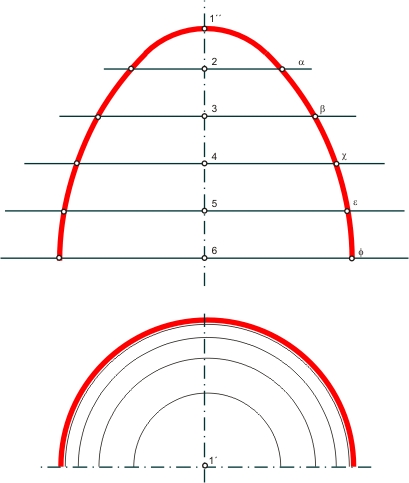PHYSICS CHALLENGE QUESTION 7 SOLUTIONS FIRST OF ALL LET’S
PHYSICS DEPARTMENT PROFORMA RESEARCH PROPOSAL CONFIRMATION FOR DIRECT1 PHYSICS OF BIOLOGICAL SYSTEMS CONRAD ESCHER HANSWERNER
10282004 PHYSICS 556714 NUCLEI AND ELEMENTARY PARTICLES PHY 556714
112 SPRINGS CALCULATION SHEET AQA PHYSICS QUESTIONS 1 WHEN
196 ANALYSING STARLIGHT FOLLOWUP SHEET OCR PHYSICS A WAVELENGTH
2 FOUNDATIONS OF PHYSICS CALCULATION SHEET OCR PHYSICS A
Physics Challenge Question 1: Solutions
Physics Challenge Question 7: Solutions
First of all, let’s note that in this problem, there is no acceleration.
Part 1
A good way to start would be to make a drawing and a table. The problem already gives us a drawing, so I’ll just make a table. I’ll call the direction across the river “up/down”, the direction along the river “left/right”, and the resulting direction the “diagonal”. Here’s what we know for part 1:
|
|
Up/down |
Left/right |
Diagonal |
|
x |
100 m |
|
|
|
v |
1 m/s |
|
|
|
t |
|
|
|
(Even though we know the waterfall is 50m downstream, we don’t know whether or not that’s actually where he’ll end up.)
So we can’t say anything about the motion left/right or diagonal, but we can find the time to cross (here, we need the velocity related only to that direction!):
![]()
![]()
Part 2
For him to just avoid the waterfall, he would need to land 50 m downstream from where he started. I also know the time he takes to travel across from part 1. So for this part, our table looks like this:
|
|
Up/down |
Left/right |
Diagonal |
|
x |
100 m |
50 m |
|
|
v |
1 m/s |
|
|
|
t |
100 s |
100 s |
100 s |
I know everything in the left/right direction except for v, so I’ll just solve using our usual equation:
![]()
So if the current is 0.5 m/s (or less), he’ll survive.
Part 3
Our table now looks like this:
|
|
Up/down |
Left/right |
Diagonal |
|
x |
100 m |
50 m |
|
|
v |
1 m/s |
0.5 m/s |
|
|
t |
100 s |
100 s |
100 s |
S o
to find v for the diagonal direction, let’s look at the
following picture:
o
to find v for the diagonal direction, let’s look at the
following picture:
Notice from the table that we don’t have enough information to use the velocity equation for the diagonal direction. But looking at the right-angled triangle, we can use Pythagorean theorem.
![]()
![]()
Part 4
Notice first that 0.8 m/s is too fast for him to survive. He would travel 80 m downstream during his 100 s swim, well into the waterfall! (We also knew this from our answer to part 2.)
W e
can’t use our table from before, since the situation has now
changed. The key here is that he angles himself to oppose the
current. This means that the left-right part of his velocity must be
0.8 m/s to exactly cancel the river, as shown in the picture.
e
can’t use our table from before, since the situation has now
changed. The key here is that he angles himself to oppose the
current. This means that the left-right part of his velocity must be
0.8 m/s to exactly cancel the river, as shown in the picture.
We’ll use the Pythagorean theorem again:
![]()
![]()
This is the speed in the up/down direction. Since we still know the displacement in this direction is 100 m, we can now use the velocity equation and solve for the time:
![]()
![]()
So it takes him a little longer to get across, but at least he survives!
2 SOLID STATE PHYSICS (INDIA) 45 (2002) XXXXXY PROCEEDINGS
20TH GAMOW INTERNATIONAL ASTRONOMICAL CONFERENCESCHOOL ASTRONOMY AND BEYOND ASTROPHYSICS
295407-electricity-sensing-waves-and-quantum-physics-mcq-topic-quiz-lesson-element
Tags: challenge question, first, solutions, let’s, question, physics, challenge
- 10MINUTE WALKING ROUTES BEGIN IN THE LOBBY WALK TO
- SINGLE OUTCOME AGREEMENT BETWEEN HIGHLAND COUNCIL IN ASSOCIATION WITH
- 5 MEGÁLLAPODÁS (NYERTES PÁLYÁZÓKNAK) 1 FELEK 1 NYERTES PÁLYÁZÓ
- MEDIA RELEASE TUESDAY 4 DECEMBER 2018 MARION LOOKS TO
- TEMA 9 (I) DETERMINACIÓN DE LA CLASIFICACIÓN EXIGIBLE EN
- OBRAZAC E IZJAVA O PARTNERSTVU OVOM IZJAVOM POTVRĐUJEMO DA
- DIRECTIONS TO US DEPARTMENT OF TRANSPORTATION SOUTHEAST FEDERAL CENTER
- UNIVERSITY OF CALIFORNIA LOS ANGELESSCHOOL OF MEDICINE CURRICULUM VITAE
- FEDERAAL AGENTSCHAP VOOR GENEESMIDDELEN EN GEZONDHEIDSPRODUCTEN KLINISCHE PROEVEN
- PRZEDMIAR ROBÓT LP KOD OPISU ROBÓT OPIS ROBÓT JEDN
- PYTANIA I ODPOWIEDZI Z DNIA 16 PAŹDZIERNIKA 2018 R
- EUROPEAN INTEGRATION SCHOOL FOR CIVIL SOCIETY LEADERS OF UKRAINE
- W ALIKOTA YOGYAKARTA PERATURAN WALIKOTA YOGYAKARTA NOMOR 8 TAHUN
- WEST VALLEYMISSION COMMUNITY COLLEGE DISTRICT WEST VALLEYMISSION COMMUNITY COLLEGE
- HUMAN RESEARCH PROTECTION INSTITUTIONAL REVIEW BOARD SERIOUS ADVERSE EVENT
- ASSESSORATO AL PERSONALE IL COMUNE DI BOLZANO È UNO
- DAY WALK IN AND AROUND TURKUÅBO INLEDNING ETT MILJÖVÄNLIGT
- SERBEST MÜŞAVİRLİK MÜHENDİSLİK HİZMETLERİ VE MESLEKİ DENETİM YEREL KURULTAYLARI
- ZAŁOŻENIA MODELU KONKURENCJI DOSKONAŁEJ 1 ZAŁOŻENIE JEDNORODNOŚCI PRODUKTU 2
- NOVEMBER 9 2007 CONTACT SALLY GALLION 3053486631 CARMEN ALGECIRAS
- LISTEN A MINUTECOM MOBILE PHONES HTTPWWWLISTENAMINUTECOMMMOBILEPHONESHTML ONE MINUTE A
- 1 INTRODUCCIÓN EN ESTE CAPÍTULO HALLAREMOS EN CUÁNTOS PUNTOS
- REPARATION SERVICE VEDLIGEHOLD GENERELT SKEMAINDLEDNING GENEREL DENNE TJEKLISTE
- REGULAMIN PRZYZNAWANIA NAGRODY RADY PROGRAMOWEJ TVP KATOWICE ART1 CEL
- VICTORIA – TRANSMISSION VICTORIAN TRANSMISSION SYSTEM (VTS) PIPELINE LICENCE
- PRILOGA PODROBNEJŠI OPIS METAPODATKOV JAVNIH EVIDENC IN INFORMATIZIRANIH ZBIRK
- BARNBÖCKER SOM FINNS PÅ FLERA SPRÅK PÅ BIBLIOTEKEN I
- {RTF1ANSIANSICPG1252UC1DEFF0 {FONTTBL{F0FROMANFCHARSET0 CHHKIF+TIMESNEWROMANBOLD{\FALT TIMES NEW ROMAN}}{F1FROMANFCHARSET0 CHHKLG+TIMESNEWROMANITALIC{\FALT TIMES NEW
- ……………………………… DNIA …………… MIEJSCOWOŚĆ ………………………………………… ………………………………………… ………………………………………… (WNIOSKODAWCAINWESTOR)
- APPENDIX C THE RAW SCORES FOR EACH PARTICIPANT ARE
 EMILIO JOSE DOMINGUEZ GARCIA PSICOLOGIA TEORICA 2005 EL TIEMPO
EMILIO JOSE DOMINGUEZ GARCIA PSICOLOGIA TEORICA 2005 EL TIEMPOOŚWIADCZENIE WYKONAWCY NAZWA WYKONAWCY ADRES WYKONAWCY
ZAŁĄCZNIK NR 17 UL ŻWIRKI I WIGURY 2 22600
OGLAS ZA PRIJEM U SLUŽBU NA ODREĐENO VRIJEME ZA
DAUGAVPILS PAŠVALDĪBAS SIA «PARKINGS D» REĢNR41503025952 KRVALDEMĀRA IELA 13
ODPOVĚDI NA DOTAZY ČLENŮ ÚSTAVNĚPRÁVNÍHO VÝBORU VZNESENÉ NA JEDNÁNÍ
RPT NO PROPOSED BY SHORT TITLE ACTION TAKEN 10A
 Comparability of Developed Country Mitigation Efforts fei Teng1 yu
Comparability of Developed Country Mitigation Efforts fei Teng1 yuSPRING GROVE HOSPITAL CENTER ACCIDENT REVIEW BOARD POLICY &
 DOCUMENTOS PARA CUMPLIMENTAR LA SOLICITUD DE FONDOS ENTIDADES HOJA
DOCUMENTOS PARA CUMPLIMENTAR LA SOLICITUD DE FONDOS ENTIDADES HOJA 8 FURIJEOVA ANALIZA 81 PERIODIČNE FUNKCIJE ZNAČAJNO SVOJSTVO SINUSOIDNE
8 FURIJEOVA ANALIZA 81 PERIODIČNE FUNKCIJE ZNAČAJNO SVOJSTVO SINUSOIDNE [PMM7311] DELETING NOTIFICATION CHANNEL THAT IS USED IN ALERT
[PMM7311] DELETING NOTIFICATION CHANNEL THAT IS USED IN ALERT7 FICHA TECNICA 1 NOMBRE DEL MEDICAMENTO ZEMPLAR
 WNIOSEK O UDZIELENIE POŻYCZKI TERMOMODERNIZACYJNEJ DLA PRZEDSIĘBIORSTW NINIEJSZYM WNOSZĘ
WNIOSEK O UDZIELENIE POŻYCZKI TERMOMODERNIZACYJNEJ DLA PRZEDSIĘBIORSTW NINIEJSZYM WNOSZĘCHECKLIST FOR LARIS TRANSFER OF OWNERSHIP APPLICATION EVERY APPLICATION
 POJISTKY JAKO JISTÍCÍ PRVEK V ELEKTRICKÝCH OBVODECH MAJÍ STÁLE
POJISTKY JAKO JISTÍCÍ PRVEK V ELEKTRICKÝCH OBVODECH MAJÍ STÁLE QUESTIONS FOR APPOINTING STAFF 1 WE AS G FAMILY
QUESTIONS FOR APPOINTING STAFF 1 WE AS G FAMILY HUEVO OVOIDE LA FIGURA MUESTRA UN OVOIDE EN CORTE
HUEVO OVOIDE LA FIGURA MUESTRA UN OVOIDE EN CORTE UCCESCHWANKL ORCHARD IRRIGATION DETERMINING THE APPLICATION RATE & UNIFORMITY
UCCESCHWANKL ORCHARD IRRIGATION DETERMINING THE APPLICATION RATE & UNIFORMITYKOOPERATİFİ YILI GENEL KURULU’NA İLİŞKİN DENETLEME KURULU RAPORU GENEL